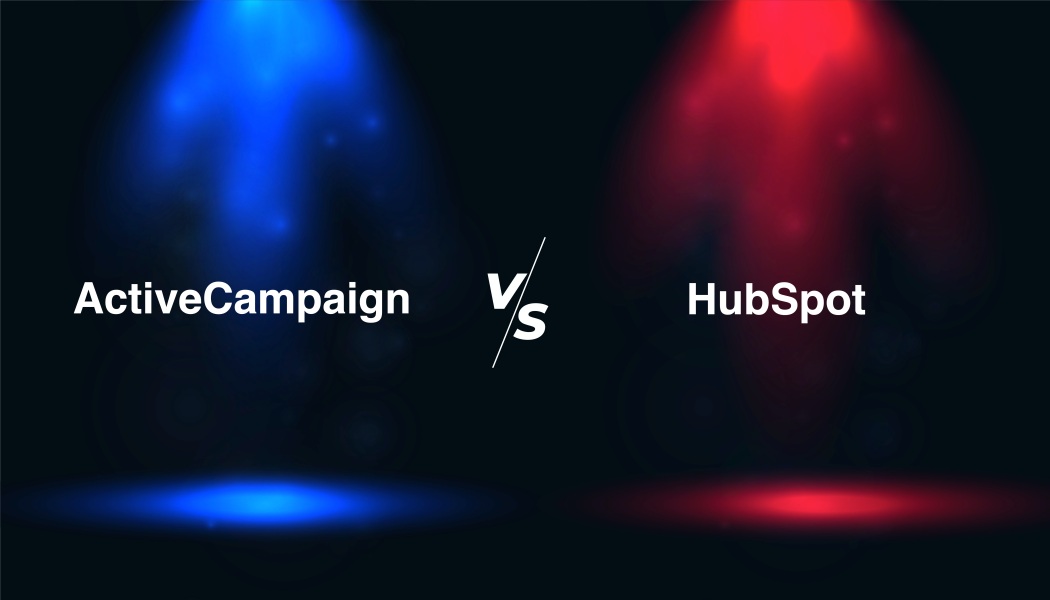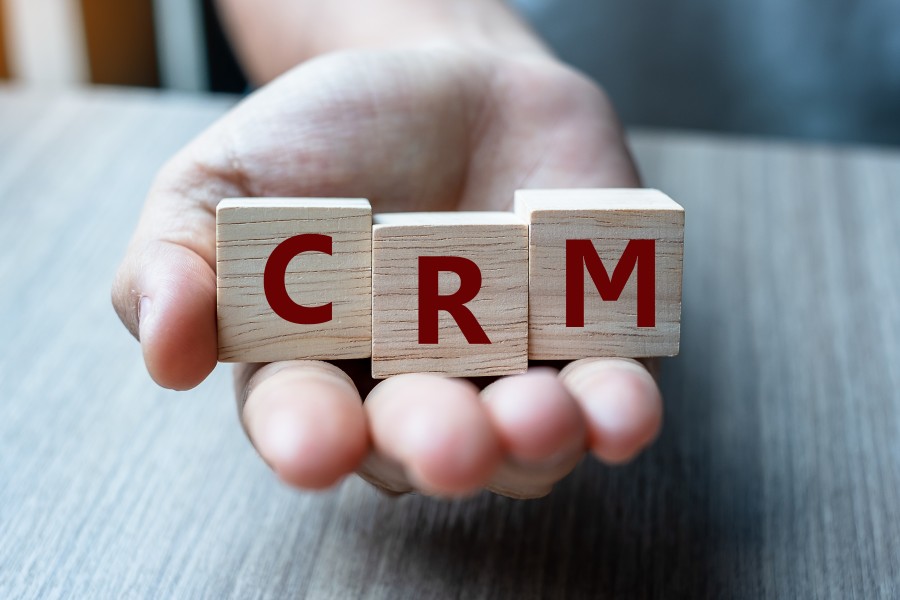As businesses grow, so does the need for effective customer relationship management (CRM) software. With so many options available, it can be overwhelming to choose the right one for your business.
ActiveCampaign and HubSpot are two popular CRM platforms that offer a wide range of features to help businesses manage their customer interactions and grow their sales.
In this comprehensive comparison, we’ll take a closer look at both platforms, their features, pricing, and overall effectiveness, to help you make an informed decision on which one is the best fit for your business. Whether you’re a small business owner or a marketing professional, choosing the right CRM can be a game-changer for your business.
So, let’s dive in and explore the differences between ActiveCampaign and HubSpot to help you make the best decision for your business needs.
What Are ActiveCampaign and HubSpot?
ActiveCampaign and HubSpot are two popular marketing automation platforms that businesses can use to streamline their marketing efforts and engage with customers more effectively.
ActiveCampaign
ActiveCampaign is a cloud-based CRM platform that offers a wide range of features to help businesses manage their customer interactions. It provides email marketing automation, sales automation, and customer support features, all in one platform.
The platform is designed to help businesses streamline their marketing processes and engage with customers at every stage of the buying journey. One of the key benefits of ActiveCampaign is its flexibility and scalability, which makes it ideal for businesses of all sizes.
HubSpot
HubSpot is a cloud-based CRM platform that offers a wide range of features to help businesses manage their customer interactions. It serves as a marketing automation tool providing sales automation, a marketing hub, and customer support features.
HubSpot is designed to help businesses of all sizes and types, and it is particularly well-suited for small to medium-sized businesses. Some of the key features of HubSpot include email marketing, marketing automation, sales automation, customer support, and CRM.
ActiveCampaign Vs HubSpot: Features
When it comes to features, both ActiveCampaign and HubSpot offer a wide range of marketing tools to help small businesses manage their customer interactions. However, there are some differences between the two platforms.
ActiveCampaign
ActiveCampaign is known for its user-friendly interface, automation workflows, and email marketing capabilities. With ActiveCampaign, businesses can create personalized email templates and campaigns, automate follow-ups, and track customer behavior.
Another standout feature is its CRM functionality, which allows businesses to manage their customer data and lead pipelines more effectively.
HubSpot
On the other hand, HubSpot is an all-in-one marketing platform that offers a wide range of features such as CRM, email marketing, social media marketing, landing pages, and analytics. It is known for its comprehensive suite of tools that cater to various aspects of digital marketing.
One of its standout features is its CMS functionality and its Custom Report Builder, which allows businesses to create and manage their website content easily while looking at the analytics.
Verdict
Both ActiveCampaign and HubSpot offer a range of features that can help businesses automate their marketing efforts. If a business is looking for a more affordable option with robust email marketing capabilities and CRM functionality, then ActiveCampaign may be the better choice.
On the other hand, if a business is looking for a comprehensive all-in-one platform with a wide range of features and integrations, then HubSpot may be the better choice.
ActiveCampaign vs HubSpot: Pricing
When it comes to pricing, both ActiveCampaign and HubSpot offer a range of plans to suit businesses of different sizes and budgets.
ActiveCampaign
ActiveCampaign offers four pricing plans: Lite, Plus, Professional, and Enterprise. The Lite plan starts at $9 per month for up to 500 contacts, while the Enterprise plan can cost up to $229 per month for up to 10,000 contacts.
All plans come with basic email marketing features such as email support, automation features and workflows, and contact segmentation. However, the higher-tier plans offer more advanced features such as lead scoring and predictive sending.
HubSpot
HubSpot, on the other hand, offers a free CRM plan, which allows you to add unlimited users, as well as three paid plans: Starter, Professional, and Enterprise. The Starter plan costs $50 per month for up to 1,000 contacts, while the Enterprise plan can cost up to $3,200 per month for up to 10,000 contacts.
While the free plan offers basic marketing features such as lead capture forms and email marketing, the paid plans come with more advanced features such as marketing automation and lead scoring.
Verdict
Overall, both ActiveCampaign and HubSpot offer competitive pricing for their respective features and capabilities. However, it is important to note that while ActiveCampaign may be more affordable for small businesses with a smaller contact list, HubSpot may be a better choice for larger businesses with a need for more advanced features and capabilities.
In addition to their pricing structure, it is also important to consider the additional costs associated with using these platforms such as implementation fees, training costs, and add-on fees for additional features.
Are you searching for the ultimate CRM solution to boost your productivity and drive growth?
Contact Growth Hackers
ActiveCampaign vs HubSpot: Integrations Offered
Both ActiveCampaign and HubSpot offer a wide range of integrations with other tools and platforms.
ActiveCampaign
ActiveCampaign offers a range of integrations with third-party apps and services, including Salesforce, Shopify, WordPress, and Zapier. These integrations allow businesses to connect their marketing automation platform with other tools they use to manage their sales, customer support, e-commerce stores, and more.
The Salesforce ActiveCampaign integration, for example, allows businesses to sync their contact data, deals, and tasks between ActiveCampaign and Salesforce. This integration can help streamline the sales process and improve communication between sales and marketing teams.
The Shopify integration, on the other hand, allows businesses to track customer behavior on their e-commerce store and use that data to create targeted marketing campaigns.
HubSpot
HubSpot also offers a wide range of integrations with third-party apps and services, including Salesforce, WordPress, Shopify, and more. One of the key advantages of using HubSpot is its native integration with its own CRM system. This integration allows businesses to keep track of all their customer data in one place and use that data to create targeted marketing campaigns.
The Salesforce integration in HubSpot also allows businesses to sync their contacts, deals, and tasks between both platforms. In addition, the email marketing tool offers a range of integrations with social media platforms such as Facebook, Twitter, and LinkedIn.
These integrations allow businesses to manage their social media accounts directly from the HubSpot platform and track social media engagement.
Verdict
When it comes to integrations offered, both ActiveCampaign and HubSpot offer a wide range of options for businesses to choose from. The key difference between the two platforms is the native integration with HubSpot’s own CRM system. The integration with Zapier allows you to send real-time data from almost any app, including Google Analytics.
For businesses that use HubSpot’s CRM, this integration can be a major advantage in terms of streamlining processes and keeping customer data organized. However, for businesses that use a different CRM system, ActiveCampaign’s integrations with third-party apps such as Salesforce can provide similar benefits.
ActiveCampaign vs HubSpot: Customer Support
Both ActiveCampaign and HubSpot offer good customer support features. Both of these platforms come with a range of features that help businesses to manage their customer interactions effectively. There are some key differences between the two platforms.
ActiveCampaign
ActiveCampaign offers excellent customer support through a variety of channels, including email, live chat, and phone support. Their service teams are available 24/7, and they are well-trained to assist customers with any issues they may face.
Moreover, they have an extensive knowledge base that provides answers to common queries, along with tutorials and guides to help users get the most out of the platform.
HubSpot
On the other hand, HubSpot also offers a reliable customer service hub through multiple channels such as email, phone support, and live chat. They have a team of experienced professionals who can help users resolve issues quickly and efficiently.
Additionally, HubSpot’s knowledge base is extensive and includes training materials, tutorials, and user guides that provide step-by-step instructions on how to use the platform’s features.
Verdict
However, one significant difference between the two platforms is the level of personalization in their customer support. ActiveCampaign’s support team is known for providing personalized assistance to customers based on their specific needs and requirements. They take the time to understand each customer’s unique challenges and provide tailored solutions accordingly. This personalized approach has helped ActiveCampaign build a loyal customer base over the years.
In contrast, HubSpot’s customer support is more standardized and less personalized. While their team is responsive and knowledgeable, they may not always provide customized solutions to individual users’ problems. This can be a drawback for businesses with unique requirements or complex workflows.
ActiveCampaign vs HubSpot: User Experience
Both ActiveCampaign and HubSpot offer a good user experience.
ActiveCampaign
One of the main advantages of ActiveCampaign is its ease of use. The platform is designed to be intuitive and user-friendly, with a straightforward interface that makes it easy to navigate and find the tools and features you need.
Additionally, ActiveCampaign offers extensive documentation and support resources to help users get up and running quickly whether it’s for customer journey mapping, email tagging, triggers and more which can be especially helpful for those who are new to marketing automation.
HubSpot
On the other hand, HubSpot can be more complex and challenging to navigate for some users. While the platform offers a wide range of features and customization options, it can take some time to learn how to use them effectively.
However, once you get the hang of it, HubSpot can be a powerful tool for managing your marketing campaigns and tracking your results.
Verdict
Another key factor in user experience is the level of customization and flexibility that each platform offers. ActiveCampaign is known for its highly customizable workflows, which allow users to create tailored campaigns that meet their specific needs.
Additionally, ActiveCampaign integrates with a wide range of third-party tools and applications, providing users with even more flexibility and control over their marketing efforts.
HubSpot, on the other hand, offers a more all-in-one approach to marketing automation. While the platform does offer some customization options, it is primarily designed to be used as a complete marketing solution, with all the tools and features you need built into a single platform. This can be a benefit for some users who prefer a more streamlined approach to marketing automation.
Don’t wait – unlock the full potential of ActiveCampaign or HubSpot today!
Work with Growth Hackers
Pros & Cons
ActiveCampaign CRM
One of the major advantages of ActiveCampaign is its user-friendly interface. The platform is designed to be easy to navigate, even for those who are not tech-savvy. The drag-and-drop editor allows users to create visually appealing emails and landing pages without any coding knowledge. Additionally, the platform’s automation workflows are intuitive and can be set up quickly.
Another pro of ActiveCampaign is its ability to personalize email campaigns. The software includes powerful segmentation and tagging features that allow businesses to tailor their messages to specific audiences. This personalization can lead to higher open rates, click-through rates, and conversions.
ActiveCampaign also offers excellent customer support. Users can reach out for assistance via chat, email, or phone. The support team is knowledgeable and responsive, which helps users resolve issues quickly.
On the other hand, one of the cons of ActiveCampaign is its pricing structure. The software can be expensive for small businesses or startups with limited budgets. Though the platform offers a free trial, it may not be enough time for businesses to fully evaluate whether the software is worth the investment.
Another potential disadvantage of ActiveCampaign is that it may not be suitable for large-scale enterprises that require complex integrations with other software. While the platform does integrate with popular tools like Shopify and WordPress, it may not have the same level of customization as other enterprise-level marketing automation tools.
HubSpot CRM
One of the most significant advantages of HubSpot is its user-friendly interface. The platform is designed to be easy to use, even for those who have little to no experience with marketing automation tools. HubSpot’s drag-and-drop interface makes it simple to create landing pages, email campaigns, and forms without the need for coding skills. The software also includes a vast library of templates and resources that can help businesses get started quickly.
Another benefit of HubSpot is its all-in-one approach. Rather than using multiple tools to manage different aspects of marketing and sales, HubSpot provides everything in one place. This saves businesses time and money by eliminating the need for multiple subscriptions and reducing the learning curve for new software.
HubSpot’s analytics capabilities are also impressive. The software provides detailed reports on website traffic, email performance, social media engagement, and more. This data can help businesses make informed decisions about their marketing strategies and identify areas for improvement.
However, there are also some cons to consider when using HubSpot. One of the main drawbacks is its price. HubSpot’s plans can be expensive, especially for small businesses or startups with limited budgets. Additionally, some features such as custom reporting and advanced automation workflows are only available on higher-tier plans.
Another potential disadvantage is the learning curve for more complex features. While the platform is user-friendly for basic tasks, more advanced features such as lead scoring and behavior tracking require some technical expertise. This may require additional training or hiring a specialist to manage these tasks.
Finally, HubSpot’s customer support has received mixed reviews. While the company offers comprehensive documentation and a community forum, some users have reported slow response times or a lack of personalized support.
Choosing The Right CRM For Your Business
When choosing between ActiveCampaign and HubSpot, consider your business automation needs and budget. ActiveCampaign is more affordable for smaller businesses with basic CRM needs. It provides a range of features at a lower cost than HubSpot. However, if you require advanced marketing and sales capabilities, HubSpot may be the better choice.
Another factor to consider is the ease of use. ActiveCampaign has a user-friendly interface that is easy to navigate. It also offers excellent customer support to help you get started with the software. HubSpot also has a user-friendly interface but may require more training to learn how to use all the features.
Finally, consider the scalability of each software option. ActiveCampaign is an excellent choice for small to medium-sized businesses that require basic CRM features. However, it may not be the best fit for larger businesses with complex needs. HubSpot is highly scalable and can grow with your business as your needs change.
Final Thoughts on ActiveCampaign Vs HubSpot
Both ActiveCampaign and HubSpot are excellent CRM platforms that offer a wide range of features to help businesses manage their customer interactions and to help build a marketing strategy. However, there are some differences between the two platforms and the best option for your business depends on your unique needs and budget.
If you’re confused between the two, why not try the ActiveCampaign HubSpot Integration? This allows users to sync data between the two apps, making manual data entry a thing of the past. Consider the features, pricing, integrations, customer support, and user experience before making a decision.
And if you’re looking to boost your ROI by solidifying your online presence, consider the professional services of Growth Hackers. As a globally recognized digital marketing agency, our experts understand how businesses differ from each other and their online needs are just as unique.
They go beyond coaching and consulting to act as growth partners, executing proven strategies to bring in measurable results for their clients. We offer cutting-edge growth strategies to help generate leads, drive targeted traffic, increase sales, and strengthen brand awareness, among others.
Growth Hackers are committed to helping entrepreneurs, business owners, and marketers grow their businesses and gain a competitive advantage, all the while ensuring sustainable results to keep your business growing healthily.
So, go ahead and contact us today for a consultation or resolve further queries about our services at your convenience.
Meta Description: Thinking about getting a CRM tool for your business? We compare ActiveCampaign Vs HubSpot to help you make an informed decision on which one is the best fit. Learn what features each platform offers, how they compare in pricing, and more.








